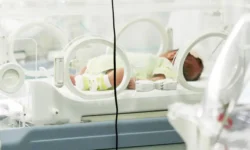Some neonatal seizures are caused by medical malpractice and negligence
Unfortunately, things don’t go as planned during labor, delivery or postpartum care. Some infants suffer severe injury or illness, possibly resulting in a fatality or life-long disability.
Infant seizures, otherwise known as “neonatal seizures,” can be caused by numerous factors, including medical negligence. If you’re a new parent and your child is suffering from seizures not long after birth, you’ll need a strong support network in place to help obtain the care and treatment your child needs—including an experienced newborn seizures lawyer to explore whether negligence played a role in your child’s condition.
What causes newborn seizures?
Ultimately, excessive electrical activity in an infant’s brain causes seizures. But there are numerous factors that can spark this type of sudden brain activity to occur. The most common causes of seizures in babies are:
- Blood sugar imbalance
- Infection
- Oxygen deprivation during labor and delivery
- Metabolic disorders
Another common cause of neonatal seizures is hypoxic-ischemic encephalopathy (or “hypoxia”), which is a medical term referring to oxygen deprivation in the brain. This type of condition can occur if a doctor or midwife fails to act when an emergency C-section is needed, for example. There are many other issues that could cause your baby’s brain to be deprived of oxygen during labor, delivery or postpartum care.
In order for a parent or doctor to provide the necessary care and treatment to a child who is suffering from neonatal seizures, the root cause of seizing must be determined. Parents should consult with a neurologist who specializes in infant seizures to determine a cause and to create a treatment plan.
Common types of seizures in newborns
Infant seizure symptoms vary because there are different types of seizures in babies.
A febrile seizure typically occurs as a result of a high fever, which may be due to an infection.
Infantile spasms, on the other hand, are a far more rare type of condition. A child with infantile spasms might seize up to 100 times in a single day. Such seizures often occur just before an infant falls asleep or when he or she is waking up.
If an infant suddenly loses all muscle tone and control, he or she may be having an atonic seizure. In babies who are old enough to sit up or stand, this type of seizure may cause a child to suddenly fall over.
Other infants have grand mal seizures, which is the type of seizure often associated with the neurological condition known as epilepsy. Grand mal seizures typically involve dramatic tremors or bodily shaking, followed by a relaxation of muscle tone.
It’s important for parents to discuss their particular child’s condition with a trained neurologist to determine which type of seizures their baby is experiencing and why.
What does a seizure look like in a baby?
Since newborns and infants cannot speak to explain how they are feeling, it’s important for parents and physicians to closely monitor the baby so that they can spot any unusual symptoms that may indicate a seizure disorder.
Signs of a neonatal seizure depend on what type of seizure the infant is having. Infant seizure symptoms can include things like repetitive mouth movements or chewing motions, a turning of the head or eyes to one side, sudden fear or apparent anxiety or confusion, bodily spasms or jerking of limbs, loss of consciousness or a bicycling movement in the legs.
Numerous seizure symptoms also happen to be movements an infant might make as a natural part of the growing process. For instance, babies often bend and stretch their limbs, sometimes in very odd or awkward ways. This is why it’s important to know how to tell if a baby is acting normally or is having a seizure.
Did medical negligence play a role in your infant’s seizures?
When delivering a baby, the medical team must closely monitor the mother’s condition, as well as that of the infant, to ensure that labor is progressing safely and that neither mother nor child show any signs of distress.
If a mother suffers from preeclampsia due to undiagnosed or untreated high blood pressure during pregnancy or delivery, it can cause newborn seizures in her baby.
It’s generally expected that an obstetrician or midwife should know how to recognize the symptoms of maternal high blood pressure and that this condition places both the mother and her baby at risk for several adverse conditions, including preeclampsia and neonatal seizures.
A doctor or midwife should know what to do to help keep a mother and baby safe. If a medical team member fails to act in accordance with industry protocol and accepted safety standards, a mother or her child can suffer severe injury.
If there is evidence of medical negligence regarding your infant’s seizures, you may have grounds to file a birth injury claim in civil court on behalf of your child.
In such cases, a plaintiff must convince the court that the defendant failed to provide a reasonable duty of care to the plaintiff. The evidence must show that the defendant was negligent in their duty and that this negligence was a direct cause of the injury.
Get help from an experienced newborn seizures lawyer
Any parent who believes that their child may have suffered infant seizures due to medical negligence should consult with a skilled birth injury attorney to determine the best course of action and seek financial restitution.
At Brown Trial Firm, attorney Laura Brown specializes in cases involving newborn seizures and other birth injuries. She’s committed to fighting for the rights of children and families impacted by medical mistakes, and she’ll use her wealth of experience to build a strong case for your family so you can get the justice and compensation your child deserves.
Contact birth injury attorney Laura Brown today to schedule a free consultation to learn more about your legal options.
- Cerebral Palsy
- Caput Succedaneum and Cephalohematoma
- Neonatal Intracranial Hemorrhage (Childbirth Brain Bleeds)
- Hydrocephalus (Extra Fluid in the Brain Cavity)
- Cervical Dystonia
- Hemiplegia (Brain or Spinal Cord Injury)
- Hemorrhagic Stroke
- Neonatal Stroke
- HIE
- Periventricular Leukomalacia (PVL) Brain Injury
- Infant Seizures
- Spastic Diplegia (Spasticity in the Legs)
- Top Risks for Birth Injuries
- Fetal Alcohol Syndrome
- Facial Paralysis
- Spinal Cord Injuries
- Bell’s Palsy
- Brachial Plexus Nerves & Erb’s Palsy
- Klumpke’s Palsy
- G-Tubes for Newborns
- Medical Errors
- Cesarean Section & Birth Injury
- Negligence in Brain Cooling Treatment
- Craniosacral Therapy
- Occupational Therapy
- Speech Therapy
- Transition From Pediatric to Adult Healthcare
- Surgical Options for Spastic Cerebral Palsy
- Fetal Intolerance to Labor
- Jaundice (Kernicterus)
- Breech Position
- Placental Complications
- Umbilical Cord Problems
- Uterine Rupture
- Cervical Incompetence (Insufficiency)
- Blighted Ovum
- Necrotizing Enterocolitis (NEC) - Intestinal Inflammation
- Cephalopelvic Disproportion
- Meconium Aspiration Syndrome
- Amniotic Fluid Embolism
- Birth Injury from Premature Delivery
- Developmental Delays
- Abnormal Cord Insertion
- Infections at Birth
- Chorioamnionitis Bacterial Infection
- Premature birth
- Oxygen Deprivation
- Listeria
- Birth-Acquired Herpes
- Placenta Previa
- Placental Abruption
- Mismanaged Fetal Malposition
- Rapid Labor
- Obesity Related Birth Injuries
- Intrauterine Growth Restriction
- Blood Clots During Pregnancy
- Ectopic Pregnancy Misdiagnosis
- Myths & Facts About Birth Injuries
- Bacterial Vaginosis
- Gestational Diabetes
- Maternal Mortality Risk
- Oligohydramnios (Low Amniotic Fluid)
- Infections During Pregnancy
- Excessive Bleeding During Pregnancy
- Congenital Syphilis


